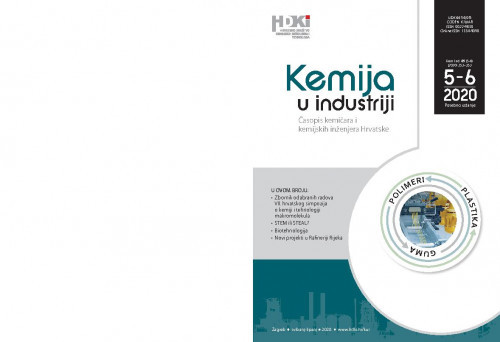Mikroplastika predstavlja ozbiljan problem u morskom i priobalnom okolišu. Analiziran je uzorak mikroplastike iz sedimenta plaže Prapratno na poluotoku Pelješcu, Hrvatska. Uzorkovanje i laboratorijsko odvajanje provedeni su prema DeFishGear protokolu. Svaki ispitak svrstan je u određenu kategoriju te je svakom određena masa, boja, prozirnost, maksimalna dimenzija i površina. Identifikacija je provedena infracrvenom spektroskopijom (FTIR) – HATR tehnikom. Otpad s plaže Prapratno sastoji se uglavnom od polietilena te, u manjem udjelu, od polistirena i polipropilena.; Microplastics represent a major problem in the marine and coastal environment. In this work, microplastics from the sediment of Prapratno beach on the Pelješac Peninsula (Croatia) were analysed. Sampling and laboratory separation were performed according to the DeFishGear protocol (Derelict Fishing Gear Management System in the Adriatic Region). The microplastic waste from Prapratno beach sediment consisted of 116 specimens, which could be classified into 6 micro litter categories according to EU TG ML Master List (Fig. 1). Fragments were found to be the predominant category of microplastic waste from the sediment of Prapratno beach, followed by granules, films, pellets and foams, which were present in approximately the same number, while filaments were the least represented category (Fig. 2). The most important categories by mass were granules and fragments, followed by pellets, while films, foams and filaments made up a very small content of the total sample mass (Fig. 3). The numerical contents (Fig. 4), did not correspond to the mass contents (Fig. 3) of individual categories due to the different densities and thicknesses of the specimens in each category. Almost all the base colours were present in the analysed samples (Fig. 5), while 90.52 % of specimens were opaque (Fig. 6). The maximum dimension and surface area of each specimen was determined by Digimizer Image Analysis Software. Maximum dimensions in the range of 1–5 mm were observed in 52.59 % of the specimens, thus belonging to large microplastics (LMP), while 47.41 % of the specimens had maximum dimensions in the range of 5–20 mm, thus belonging to so-called mezzo litter. The distribution of specimen dimensions within LMP is shown in Fig. 8, and within mezzo litter in Fig. 9. The fraction of each category in the total sample surface area is shown in Fig. 10.
Sažetak

 Kemija u industriji : 69,5/6 (2020) / glavni i odgovorni urednik Nenad Bolf.
Kemija u industriji : 69,5/6 (2020) / glavni i odgovorni urednik Nenad Bolf.